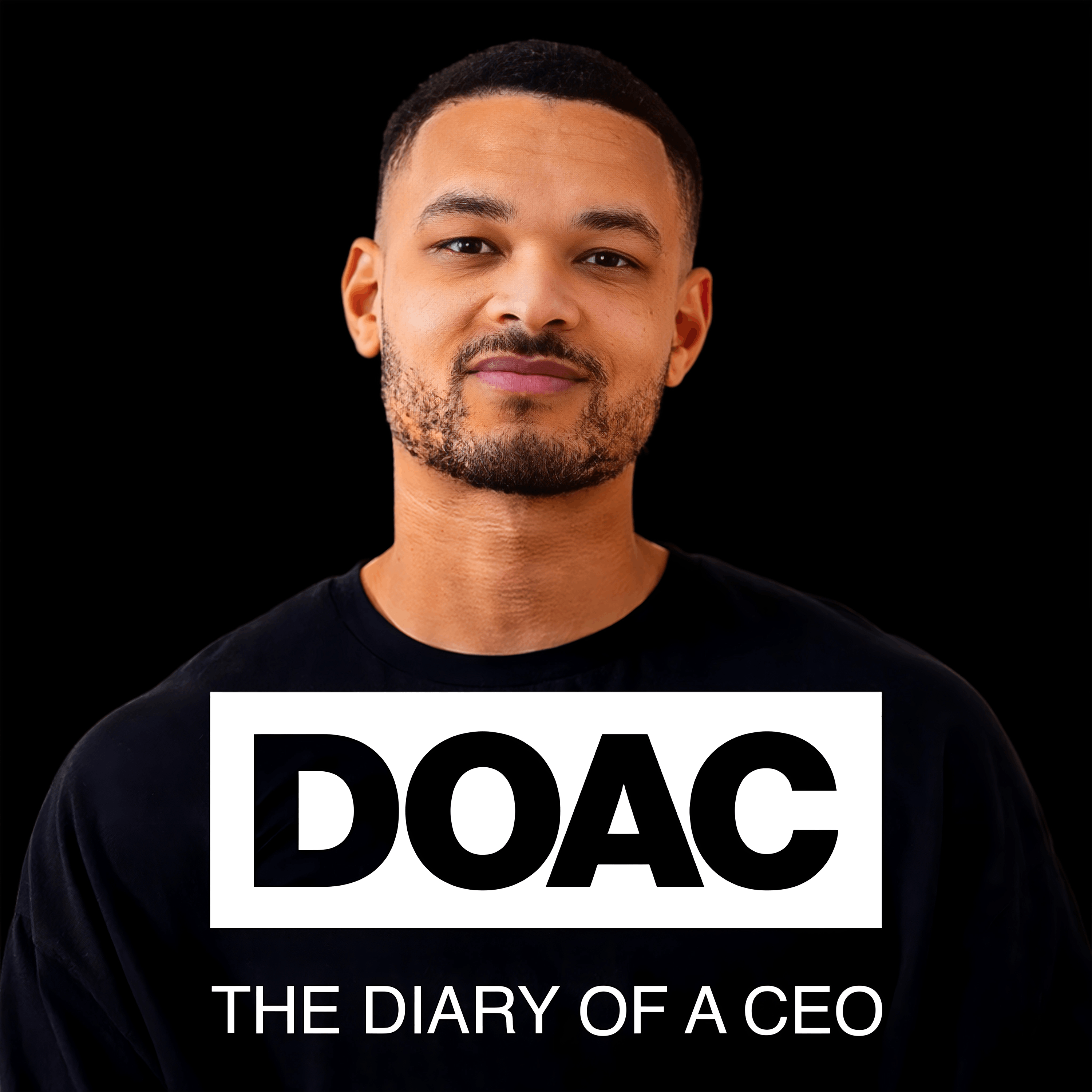
Heliox: Where Evidence Meets Empathy 🇨🇦
Join our hosts as they break down complex data into understandable insights, providing you with the knowledge to navigate our rapidly changing world. Tune in for a thoughtful, evidence-based discussion that bridges expert analysis with real-world implications, an SCZoomers Podcast
Independent, moderated, timely, deep, gentle, clinical, global, and community conversations about things that matter. Breathe Easy, we go deep and lightly surface the big ideas.
Curated, independent, moderated, timely, deep, gentle, evidenced-based, clinical & community information regarding COVID-19. Since 2017, it has focused on Covid since Feb 2020, with Multiple Stores per day, hence a sizeable searchable base of stories to date. More than 4000 stories on COVID-19 alone. Hundreds of stories on Climate Change.
Zoomers of the Sunshine Coast is a news organization with the advantages of deeply rooted connections within our local community, combined with a provincial, national and global following and exposure. In written form, audio, and video, we provide evidence-based and referenced stories interspersed with curated commentary, satire and humour. We reference where our stories come from and who wrote, published, and even inspired them. Using a social media platform means we have a much higher degree of interaction with our readers than conventional media and provides a significant amplification effect, positively. We expect the same courtesy of other media referencing our stories.
Heliox: Where Evidence Meets Empathy 🇨🇦
💸 The Hidden Cost of Private Equity
Please see the corresponding Substack episode.
You probably don't know who owns your local hospital. You might not realize that the newspaper you grew up reading is now controlled by a firm that views journalism as a spreadsheet optimization problem. And when your rent suddenly jumps 30% or your neighborhood grocery store closes without warning, you probably blame "the economy" or "market forces"—abstract concepts that feel as inevitable as weather.
But there's nothing inevitable about what's happening. There's a very specific monster prowling through American communities, and it has a name: private equity.
Bad Company: Private Equity and the Death of the American Dream
This is Heliox: Where Evidence Meets Empathy
Independent, moderated, timely, deep, gentle, clinical, global, and community conversations about things that matter. Breathe Easy, we go deep and lightly surface the big ideas.
Thanks for listening today!
Four recurring narratives underlie every episode: boundary dissolution, adaptive complexity, embodied knowledge, and quantum-like uncertainty. These aren’t just philosophical musings but frameworks for understanding our modern world.
We hope you continue exploring our other podcasts, responding to the content, and checking out our related articles on the Heliox Podcast on Substack.
About SCZoomers:
https://www.facebook.com/groups/1632045180447285
https://x.com/SCZoomers
https://mstdn.ca/@SCZoomers
https://bsky.app/profile/safety.bsky.app
Spoken word, short and sweet, with rhythm and a catchy beat.
http://tinyurl.com/stonefolksongs
Curated, independent, moderated, timely, deep, gentle, evidenced-based, clinical & community information regarding COVID-19. Since 2017, it has focused on Covid since Feb 2020, with Multiple Stores per day, hence a large searchable base of stories to date. More than 4000 stories on COVID-19 alone. Hundreds of stories on Climate Change.
Zoomers of the Sunshine Coast is a news organization with the advantages of deeply rooted connections within our local community, combined with a provincial, national and global following and exposure. In written form, audio, and video, we provide evidence-based and referenced stories interspersed with curated commentary, satire and humour. We reference where our stories come from and who wrote, published, and even inspired them. Using a social media platform means we have a much higher degree of interaction with our readers than conventional media and provides a significant amplification effect, positively. We expect the same courtesy of other media referencing our stories.
This is Heliox, where evidence meets empathy. Independent, moderated, timely, deep, gentle, clinical, global, and community conversations about things that matter. Breathe easy. We go deep and lightly surface the big ideas. Music You've sent us an amazing set of materials that really gets to the heart of something powerful, but often kind of hidden in our economy. Private equity. So our mission today, let's unpack these sources. We're aiming to pull out the most crucial bits of knowledge. We'll look at how these private equity firms, often working way behind the scenes, are actually reshaping whole industries. Think retail, healthcare, news, even housing. And this has real impacts, right? On companies, communities, individuals, maybe even impacting you directly. We're gonna start with a really personal story, a journalist whose own experience kind of launched her investigation into this world. Then we'll zoom out a bit, understand how the industry actually works. And then we'll dive into these four really compelling stories, individuals whose lives were just profoundly changed by all this.- Yeah, and for decades, really, private equity has played by its own set of rules. They often mask their strategies, their tactics, And the real consequences aren't clear until people are kind of forced to live through them. We're going to look at how they've essentially flipped the traditional business model on its head, prioritizing shareholder value often above, well, pretty much everything else. Okay, let's get into this then. To really grasp the foundation of private equity, we actually need to step back and look at it. Pretty major shift in thinking, right? Something that really paved the way. Absolutely. That foundational shift, you could argue, really stems from Milton Friedman's big 1970 essay in The New York Times. He brought forward this idea, a shareholder theory. And basically, he argued that the only social responsibility a business has is to increase its profits. That means prioritizing shareholders over everyone else, workers, suppliers, customers, the community. And this idea, it totally transformed MBA programs, you know, business schools across the country. It really set the stage for how private equity operates today. Okay, shareholder theory. And how does that translate into action? What's the main mechanism they use? Well, the core mechanism is something called a leveraged buyout, an LBO. Essentially, a private equity firm borrows a huge amount of money to buy a company. But here's the kicker, the really crucial part. That massive debt, it doesn't stay with the private equity firm. It gets immediately transferred onto the company they just bought. The firm itself might only put in like a tiny fraction of the actual purchase price. They rely on outside investors, pension funds, endowments. for the rest. Okay, wow. So the company itself takes on the debt used to buy it. That sounds, well, it sounds pretty risky for the company. Yeah. Can you give us an example? Like what happened with Houdail? I think that was an early KKR deal. Yeah, Houdail's a really striking example. KKR bought them back in 1980, put in about $390 million. Nine years later, they sell. And KKR, they made a massive 33% return on their investment. Huge win for them and their investors. But what about Houdail itself and its workers? That's the other side of the coin. 7,700 jobs at Hudale vanished. Whole towns that depended on those jobs were basically ruined. But from KKR's perspective, you see, it was a triumph. Why? Because the investors made money. It didn't matter that the company itself wasn't a winner or didn't even survive intact. That's sobering. So they make money even if the company fails. How do they frame this themselves, though? Surely they don't say they're aiming to destroy jobs. Oh, no, absolutely not. They often present themselves as rescuers, right, like an intensive care unit for companies that are struggling. They promise to turn things around, make the company efficient, ready for a profitable sale later on. The ICU analogy. But in practice, the strategy very, very often involves deep cost cutting. And that usually means job losses, significant ones. Research actually shows employment drops on average about 4.4 percent in the first two years after an LBO. And some studies, they suggest it could be over 25 percent gone within five years if it was a public company taken private. OK, so the cost cutting is real. What about the long term health of these companies then? If they're loaded with debt and cutting costs, are they actually set up for success down the line? Well, the data points to a pretty worrying trend. Around 20%, one in five of companies bought by private equity end up in bankruptcy within 10 years. 20%. How does that compare? It compares really poorly. For other similar companies, it's only about 2%. So 20% versus 2%. Wow. It really suggests that the overwhelming debt load from the LBO is a major factor. The insight here, maybe, is that private equity isn't just restructuring companies. Sometimes it's actually a catalyst for their failure. The model seems to prioritize the firm's short-term gain over the company's long-term survival. They take the profit, and the company keeps the risk. And this isn't just a niche thing, right? You mentioned how widespread this is. Oh, it's staggering. Globally, private equity firms now control something like $8.2 trillion in assets.$8.2 trillion. Trillion. Trillion. Just to give you some perspective, that's more than the GDP of any country on earth except the U.S. and China. And they own pieces of, well, almost everything now. Hospitals, oil companies, daycare centers, supermarkets, voting machine manufacturers, local newspapers, Even nursing homes, it's incredibly pervasive. And because they're private, not publicly traded, there's less visibility, right? Exactly. That's a huge part of it. It becomes almost impossible, as one source put it, to tell what a private equity-owned company is up to. You don't know how much money they're really making, what their actual strategy is, sometimes not even what the top execs are paid. So workers are left in a precarious position. Communities don't know what's happening. Right. And that lack of transparency, it feels less like an accident and more like, well, part of the design. It allows them to operate with much less scrutiny. often at the expense of the people who are deliberately kept in the dark. Okay, let's shift from the sort of theory in the big picture to a really concrete example. One that probably resonates with a lot of people listening. Toys R Us. I mean, who didn't love Toys R Us? Charles Lazarus, the founder, he was a real visionary, wasn't he? He created this concept of the category killer store way back. Big stores, huge selection, aggressive discounting. it really changed toy selling absolutely he disrupted the old department store model but then ironically his own model got used against him Amazon and Walmart came along adopted that same aggressive pricing that loss leader approach but just massively scaled it up right in Toys R Us started to struggle yeah they struggled and that led to the big private equity buyout in 2005 KKR Bain Capital and Fornado bought it for six point six billion dollars and here's the LBO playbook again over five billion dollars that price was borrowed money debt and where did that debt go let me guess on to toys r us itself exactly right on to toys r us books so from day one of that new ownership the company was basically drowning in debt payments okay so now let's bring in liz she's a long time retail worker starts at toys r us in twenty twelve that's seven years after the buyout What was her experience? She mentioned being impressed at first, right? Busy stores seemed functional, but underneath the company was already struggling with those huge debt payments you mentioned. Right. She walked into a company that looked okay on the surface, but was fundamentally weakened by that debt load. So what was the private equity strategy then? for a company already loaded with debt? Were they trying to innovate their way out, invest in the stores online? Well, that's the interesting part. Instead of major investments in, say, modernizing the stores or building a really strong online presence, which they desperately needed, especially after losing a key deal with Amazon. They were way behind online. Way behind online. But the focus wasn't there. It was mostly on lean operations, optimizing the supply chain, cutting costs, any cash left over after paying the management fees to the private equity firms and servicing that huge debt. Right. It wasn't going into making the stores better or catching up online. It went into things like new inventory systems, which, you know, ultimately helped them employ fewer people. And the private equity firms themselves, they were still getting paid, right? even while the company struggled. Oh, absolutely. This brings us to the famous 2-in-20 fee structure. It's pretty standard in private equity. They charge a management fee typically 2% of the money investors put in every single year, no matter how the company does. 2% just for managing it. Yep. And then they take 20% of any profits above a certain benchmark when they eventually sell. But the key thing is they make money from those management fees regardless. For the Toys R Us deal, even though it ended in bankruptcy, Bain and KKR still made millions in fees, like $61 million for Bain, $18 million for KKR just in fees. That's not even counting other things like debt refinancing deals. So they profited even as the company collapsed and workers lost everything. That's how the model works. They profited, the company went bankrupt, workers lost their jobs, and crucially, they lost their severance pay too. Which brings us back to Liz. Liz. Losing her job, no severance, that must have been devastating. She talked about having to learn basic things like how to write a resume, apply for jobs online, things she hadn't needed before. And this shared experience, this hardship, it really fueled something, didn't it? It did. It fueled collective action. workers started organizing through groups like the Dead Giraffe Society, kind of a dark humor name, referencing the Toys R Us mascot. Right, Jeffrey the Giraffe. And also Rise Up Retail. They basically decided, look, if the company won't take care of us, we have to take care of each other and fight back. And they came up with a really clever strategy targeting the pension funds. Why pension funds? It was innovative. Most big pools of money, billions of dollars, are managed by people pretty far removed from everyday workers. But pension fund boards, they often include participant representatives, meaning actual teachers, firefighters, state employees, the people whose retirement money was invested in these private equity funds. The activists figured these board members might be more sympathetic than, say, a Wall Street executive. So Liz actually went and spoke at these meetings? She did. She traveled to different states, stood up in front of these boards and told her story. Explained what happened, how workers were left with nothing, and asked the boards to hold KKR and Bain accountable for how their money was being used. Did it work? What was the result? It was, honestly, a pretty remarkable victory. Unprecedented, really. after months of pressure kkr and bain agreed to voluntarily contribute twenty million dollars to a hardship fund for the laid off toys r us workers twenty million wow voluntary voluntary now rise up retail calculated the workers were actually owed much more in severance closer to seventy five million dollars but still getting twenty million dollars voluntarily from private equity firms that was huge It was likely done to avoid more bad press, you know, and keep the powerful pension funds happy. But it showed that this kind of targeted activism could actually get results. That win must have created some momentum. Did it lead to any bigger policy pushes? It certainly added to the conversation. In 2019, Senator Elizabeth Warren introduced a bill called the Stop Wall Street Looting Act. And it was radical. It proposed things like taxing those monitoring fees at 100%. banning firms from taking out dividends or selling off real estate right after buying a company, making severance pay a priority in bankruptcy,
and maybe the biggest thing:forcing the private equity firms themselves to share responsibility for the debt if a company they bought went bankrupt. That sounds like it would fundamentally change the LBO model. Exactly. It would effectively kill leveraged buyouts as we know them. And perhaps unsurprisingly, that's precisely why the bill stood no chance of passing. The industry pushback was and remains incredibly strong. And speaking of things that don't pass, what about that carried interest loophole? That comes up a lot. Right. That's another longstanding issue. Basically, it lets private equity fund managers pay taxes on their main source of income, their share of the profits that carry at the lower capital gains tax rate, around 20%. Instead of the regular income tax rate, which can be up to 37%. Exactly. It saves them billions. Right. The government estimates closing it could bring in maybe $200 billion over 10 years. But despite presidents from both parties promising to close it and multiple attempts in Congress, it just never happens. It always gets stripped out of bills at the last minute. It just shows how politically difficult it is to make even small changes that affect private equity's bottom line. OK, so we've seen the impact on retail. What about something even more fundamental, like health care? Let's talk about Roger Goese. He's a doctor in Riverton, Wyoming, dedicated to rural medicine, inspired by his uncle, right? Yeah. His uncle Austin was a classic family doctor, a real pillar of the community, delivered babies, made house calls, the whole nine yards. And for a long time, that was the model for American medicine. Private doctors often linked to local nonprofit hospitals. There were even laws in many states, these corporate practice of medicine doctrines designed to keep business interests out of health care decisions. The idea back in the 1930s was that no third party should come between a doctor and patient. Profit shouldn't be the motive. So how did Riverton's Hospital end up involved with corporations? It started OK, didn't it? With HCA. It did. Initially, HCA, a big hospital chain, seemed like a savior back in 1981. They invested millions, built a new facility for Riverton Memorial. Roger himself said he was initially wary of corporate medicine, but got over it because HCA seemed like a positive force. But then things changed when LifePoint took over and later Apollo Global Management, the private equity firm. Right. When LifePoint, which was later bought by Apollo, came in, the perspective really shifted. They started viewing hospitals less as community assets and more as, well, widgets on a spreadsheet, things to be optimized for profit. And what was the impact on the ground? for roger and the community it was devastating the big blow came in twenty eighteen when life point permanently shut down riverton's obstetrics department no more babies born in riverton why what was the reason given the official reason was financial low reimbursement rates from medicaid but the human cost was immense Pregnant women suddenly had to travel hours, sometimes in terrible weather, blizzards even, just to deliver their babies. And this isn't just Riverton. It's a nationwide crisis in rural areas. Fewer than half of rural hospitals even have obstetrics departments anymore, and that number keeps dropping. Roger didn't just accept this, did he? He started fighting back. He did. His initial quiet anger turned into very public activism. he helped form the save our riverton hospital group which eventually became a formal entity the riverton medical district or rmd he wrote letters tried to reason with lifepoint and apollo he felt like they had kind of used his credibility his local standing to gain trust initially and then pulled the rug out what do the numbers show about what happened financially versus what happened to care it's a stark contrast under private equity ownership the hospital sage west actually doubled its operating margin between twenty thirteen and twenty nineteen so financially for the owners it was doing better but care suffered dramatically look at air ambulance flights out of fremont county where riverton is State health data shows they went from 155 flights in 2014 to 937 flights in 2019. Wow, a huge jump. A massive jump. It's a clear indicator that people weren't getting the care they needed locally anymore. They had to be flown out for emergencies, for births, for things that the hospital used to handle. The core insight seems to be when you apply that pure profit lens to essential services like health care, community well-being, and basic access, can just plummet. Is there another way, though? Can rural hospitals survive without these kinds of cuts? Well, some experts argue yes. There's a health care consultant named Eric Schell who talks about an abundance mentality instead of a scarcity one. He points to examples like Mahaska Health in Iowa. It's a non-profit hospital, similar-sized community to Riverton. during the pandemic when lots of places were cutting staff maheiska actually expanded services they hired doctors and nurses laid off elsewhere they went for growth instead of cuts exactly and guess what by twenty twenty three they saw patient numbers go up and they became significantly profitable It suggests that focusing on growth and meeting community needs can actually be a viable path for rural hospitals, maybe even more viable than just cutting everything to the bone. So inspired by that kind of possibility, Roger and the RMD set a really audacious goal, didn't they? Build a whole new hospital. An incredibly ambitious goal. Build a new, locally owned, non-profit hospital. Initially, they thought maybe $35 million dollars. Then inflation and updated standards pushed the estimate up to $60 million. That's a huge amount for a small community. Was there a moment that really crystallized the need for them? Roger shared a story about a colleague, Courtesy. His young son fell, cut his forehead badly, simple injury, needed stitches, but they couldn't even get that done in Riverton. They had to drive elsewhere. Things like that really drove home the urgency. So $60 million goal. How did they possibly manage that? Did they succeed? It's actually an amazing part of the story. Eric Schell, the consultant, was pretty skeptical. He admired their spirit, but basically thought, nice idea, but these well-meaning locals won't pull it off. But they did. They absolutely did. They managed to raise an incredible $54 million, mostly locally.$54 million? They tapped into that tight-knit community spirit. People saw it, as one source put it. Like, A group project where everyone actually pitches in. There was just this overwhelming local buy-in donations poured in. It was remarkable. That's genuinely inspiring. A community literally building its own hospital. Yeah. But is that a model that can be replicated everywhere? Yeah. That's the tough question, isn't it? While Riverton's success is fantastic, building brand new hospitals probably isn't a scalable solution for the, what, 460 plus other private equity owned hospitals facing similar pressures across the country. Federal funding for rural development is limited. And honestly, not every town, even close knit ones, has that same unique mix of leadership, community cohesion and maybe just sheer stubbornness that Riverton had. plus those old laws about the corporate practice of medicine while well intentioned can sometimes ironically make it harder to set up new locally controlled health entities it's complex okay from health care let's pivot to another area often seen as a public good but increasingly under financial pressure local news We're going to look at Natalia's story. Her journey started as an immigrant from Mexico, teaching herself journalism out of sheer curiosity. Yeah, her story really highlights this core tension, doesn't it? Journalism should serve the public interest, inform citizens, but it's also, for the most part, run as a for-profit business. And companies like Gannett and later Gatehouse Media, they really perfected this model of financializing news. They bought up papers, consolidated aggressively, centralized operations. all to maximize profits and shareholder value. Often at the expense of the actual journalism. Often, yes. Deep cuts to newsrooms, fewer reporters, less local coverage. That became the norm in many places. Natalia saw this up close, right? At the Corpus Christi Collar times. She was trying to innovate, make it digital first. She was. She was doing really creative stuff. Online concert series with local bands focusing on SEO, video, trying to adapt. But she was doing it on a salary of thirty two thousand dollars a year, only manageable because she was living with her parents. It shows the dedication, but also the financial strain on journalists even before the really aggressive players came in. And then came Alden Global Capital. They have a particularly bad reputation, don't they? That's putting it mildly. One source called them the universally recognized villain of the news industry. They're known for just ruthless, vampiric cost cutting, as someone termed it. They lay off even more journalists than Gannett or Gatehouse typically did. Remember that photo from the Denver Post where the remaining staff held it up to show how dramatically the newsroom had shrunk under Alden? That really visualized the impact. And things got even more consolidated later, right, with the Gannett Gatehouse merger. Yeah. In 2019, they merged, creating the biggest newspaper owner in the U.S., controlled something like one out of every six papers. But here's the private equity angle again. The merger was financed with huge loans from Apollo Global Management, $1.79 billion. Wow. At a really high interest rate, too, eye-popping, one source called it 11.5%, So this new giant company started life already burdened with massive debt payments owed to a private equity firm. And what did that mean for the people working there versus the people at the top? Well, look at 2021. The CEO, Mike Reed, his total compensation was $7.74 million.$7.7 million. Meanwhile, you had journalists at his papers driving for DoorDash at night, working second jobs, just trying to pay their bills. The disconnect is pretty jarring. It really is. So if this for-profit debt-fueled model is gutting local news, what are the alternatives? Is anything else emerging? We are seeing the rise of nonprofit journalism. It's a really important development. Organizations like Chalkbeat, focusing on education news, or Votebeat, where Natalia works now, covering elections, they're funded differently by foundations, donations not by trying to squeeze out maximum profit. Voice of San Diego was a real pioneer here, showing that local news can exist as a public good rather than just a business. The core insight might be that financialization just fundamentally clashes with the public service mission of journalism. But is nonprofit the only alternative? What about this venture philanthropy idea? That's a newer trend. It's kind of a hybrid. Philanthropists investing in newsrooms, but looking for potential exponential growth, almost like venture capital. It shows newsrooms can find paths to financial stability, which is good. But the risk is that it tends to favor outlets and places with already strong philanthropic networks, potentially leaving behind communities that need news the most, but don't have those deep pockets. Which connects to the news desert problem. That's getting worse, isn't it? it is places with no local news outlet at all texas for example has almost ten per cent of the entire country's news deserts over two hundred counties nation-wide have none and even where papers technically still exist many are ghost papers No local reporters just filled with syndicated content. They're not really serving their communities anymore. Is government funding an option? I know that's always been controversial. Historically very taboo, yeah. Fears of government influence over the press. But the crisis is so bad now that some states are starting to experiment. New York, for instance, launched a plan in 2024 offering tax credits to help pay reporters salaries. That sounds promising. Any downsides? Well, the initial design often excludes nonprofit newsrooms, which seems counterintuitive. And sometimes the biggest beneficiaries end up being the very companies like Gannett and Malden, whose cuts created the problem in the first place. So it's complicated. So where does Natalia fit into this now? She landed somewhere better, right? She did. She's now at VoteBeat, the nonprofit focused on election integrity. She gets to cover really crucial issues, often writing in Spanish, connecting directly with her community. She actually tweeted about it, saying she feels like she's... Finally, working in a healthy, supportive, and uplifting workplace. It's a real contrast to her earlier experiences and shows the potential of these alternative models. Okay, so we've covered retail, healthcare, news. Let's move to another absolute essential, housing. And here we dive into Lauren's story. she sounds like quite a character a real fighter advocating for her community from a young age yeah she's described as a force to be reckoned with someone who doesn't back down when she sees injustice whether it was in her childhood public housing or later fighting for her kid's school And her story brings us face to face with how private equity has moved into housing in a massive way. They now own millions of homes and apartments across the U.S. How do they make money in housing? Is it the same LBO playbook? Yet not always LBOs in housing, but similar financial engineering. Firms like CIM Group, the one involved in Lauren's story, often use low-interest loans backed by the government by Fannie Mae and Freddie Mac. for instance cim got a huge three hundred and forty six million dollar loan to buy the southern towers complex where lauren lived at an interest rate of just two point two per cent government backed loans so taxpayer supported money essentially yes And these loans often don't have strict limits on rent increases or really strong enforcement of maintenance standards, so the firms can borrow cheap money, potentially raise rents, maybe skimp on upkeep, and pocket huge returns just by paying back that low-interest loan. The core insight here is pretty troubling. Public funds are being leveraged for private profit and housing, and it can make problems like affordability and poor living conditions even worse. And Southern Towers. That's a big complex, right? What were conditions like after CIM took over in 2020? Huge complex. Over 2,300 apartments in Alexandria, Virginia. And according to Lauren and other tenant activists, conditions went downhill fast under CIM.
They documented widespread problems:mold, persistent leaks, holes in walls, broken appliances that went unfixed for ages. City records back this up. Code violations reportedly skyrocketed after CIM bought the place. And Lauren was right in the middle of organizing tenants around this. There was a specific incident, wasn't there? A flood? There was. A really dramatic incident where pipes burst and flooded 14 apartments. And crucially, residents couldn't reach anyone from management for hours. No emergency contact worked. People were stranded. Lauren stepped up, organized her neighbors, started calling local news reporters, really shown a spotlight on the situation and CIM's lack of response. That takes courage. What happened to her as a result of that activism? Well, the consequence was pretty severe. Management labeled her an agitator, and eventually she was evicted from her home. Evicted? for organizing it certainly looks that way it's a stark example of how tenant organizing can be met with retaliation trying to silence dissent but she didn't stop fighting did you what's her strategy now no she's still fighting her goal as she puts it is to drive cim out of alexandria completely whatever it takes legislation lawsuits or even just in her words annoying its executives so much that they decide owning the complex isn't worth the hassle the annoy them until they go away strategy is there any evidence that can actually work against these huge firms surprisingly yes sometimes it can there's a good example from minnesota the state attorney general keith ellison sued another private equity landlord pretium partner subsidiary havenbrook homes for consumer protection violations basically being slumlords And they won. It resulted in a $2.2 million fund to pay back tenants, rent forgiveness, and Presium actually agreed to sell off its Minneapolis homes to affordable housing groups. So persistent legal and public pressure can make a difference. That's hopeful. Are activists also using that pension fund strategy, like the Toys R Us workers did, going after the money source? They are starting to, yes. Learning from other fights. Housing advocates are now targeting the big investors in these private equity funds, pension funds, like the Pennsylvania Teachers Retirement System, for example. And they're also pressuring the government agencies like the Federal Housing Finance Agency, which oversees Fannie and Freddie, arguing that they shouldn't be providing those low-cost loans to firms with... documented predatory practices stop fueling the fire basically all ties together what's Loren's take on the bigger picture solutions is she focused on policy change it's interesting while she supports progressive goals in general she's described as being pretty skeptical of what she calls pie-in-the-sky plans big ideas that seem unlikely to happen quickly Her focus is very much on the ground, direct action. She believes when you're up against billions of dollars, you can't just wait for some massive top-down change. You have to fight where you are right now. So if we kind of pull back and look at the whole picture from these stories, a key theme emerges. Private equity's whole way of operating often seems designed to make it really difficult to know what's going on. They've become masters at finding workarounds to regulations, cloaking their strategies in complexity, making it, as one source said, incomprehensible to observers and even employees. Most people don't really understand what private equity is, let alone the potential consequences, until it directly impacts their job, their hospital, their newspaper, or their or their home. And it's not just theoretical, is it? As Lauren said, it's like a monster looming just outside the window. We saw that recently with the Stewart Healthcare Bankruptcy too. Here you had this massive private equity-owned hospital chain, $9 billion in debt. Turns out they'd secretly lost over $400 million in just one year, had way more liabilities than assets. But they managed to hide the extent of their problems for years from their own staff, from suppliers, patients, even the government, until it all collapsed, affecting hospitals across eight states. It's a real-world example of that opacity having huge consequences. Exactly. And it raises a really fundamental client, going back to Friedman. His ideal world, where bosses and workers have equal power, relies on this idea of equal information. Everybody knows the score. But you look at the last 50 plus years, especially with the rise of private equity, that precondition of equal information has been basically destroyed. Workers often have no idea who really owns their company, what the long term plan is, or if the plan is to just drive it into bankruptcy. and pick over the remains. Knowledge is power, right? And private equity has figured out how to hoard that knowledge, concentrating power in its own hands, often with a nod from the government. It sounds pretty bleak when you put it like that, but the stories we talked about, Liz, Roger, Natalia, Lauren Nord, they also show incredible resilience don't they they show you the listener that even though this problem is huge and complex individual action community organizing when it's informed when it's persistent it can actually make a difference it can force change even against these giant firms So listening to all this, what really stands out to you, for me, this deep dive really throws this fundamental tension in our society into sharp relief. The constant push-pull between maximizing shareholder value, often in the short term, and ensuring the long-term well-being of communities. Maybe the final thought to leave you with is this. In a world where more and more essential services, healthcare, news, housing are being viewed primarily through that lens of short-term financial gain, what does it actually mean for a business to be truly successful? And beyond that, what's your role as an informed citizen, as a consumer, maybe even as someone whose pension fund invests in this? stuff. What role do you play in shaping a future where the value of a company needs more than just its quarterly earnings report? Something to think about. Thanks for listening today. Four recurring narratives underlie every episode. Boundary dissolution, adaptive complexity, embodied knowledge, and quantum-like uncertainty. These aren't just philosophical musings, but frameworks for understanding our modern world. We hope you continue exploring our other podcasts, responding to the content, and checking out our related articles at helioxpodcast.substack.com.
Podcasts we love
Check out these other fine podcasts recommended by us, not an algorithm.

Hidden Brain
Hidden Brain, Shankar Vedantam
All In The Mind
ABC listen
What Now? with Trevor Noah
Trevor Noah
No Stupid Questions
Freakonomics Radio + Stitcher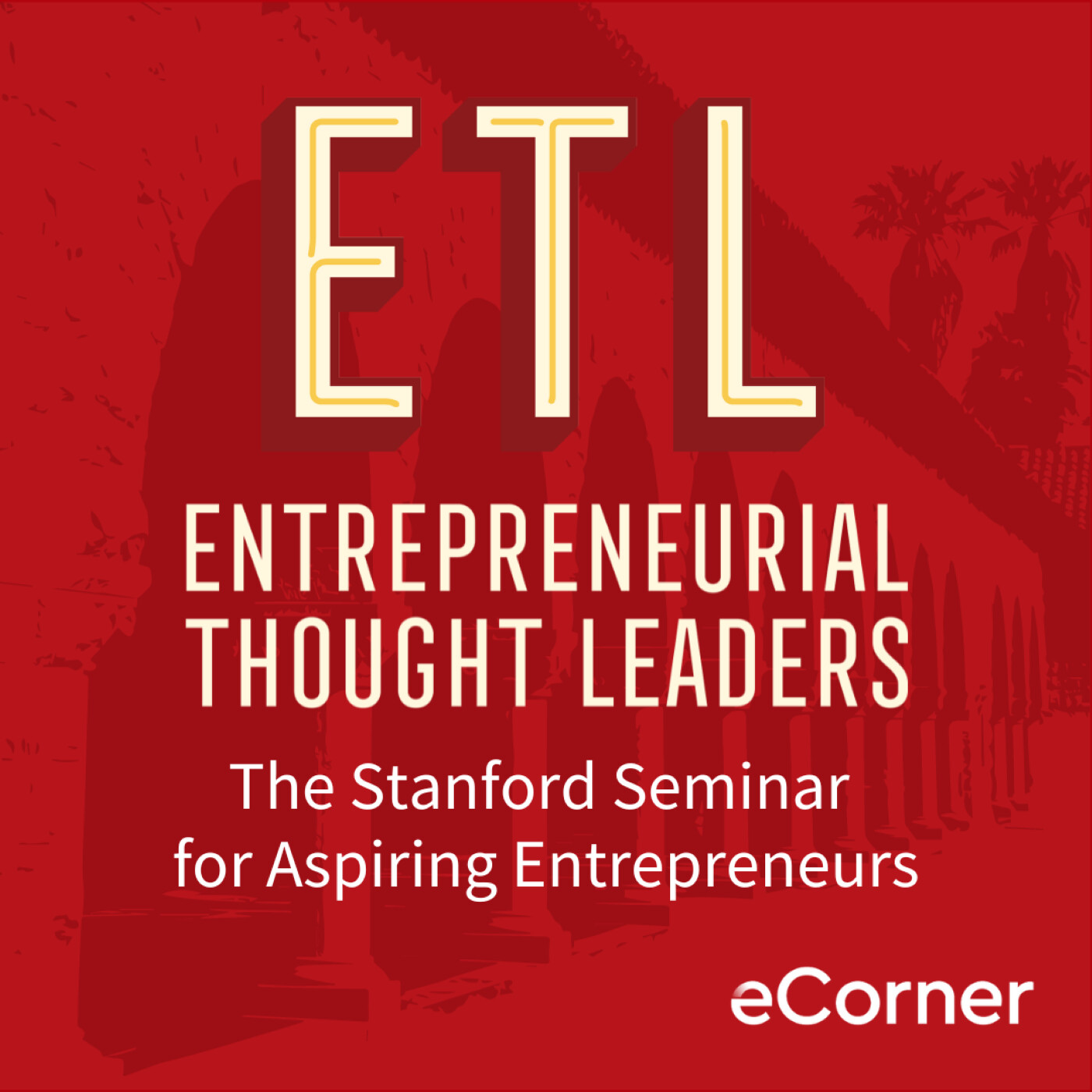
Entrepreneurial Thought Leaders (ETL)
Stanford eCorner
This Is That
CBC
Future Tense
ABC listen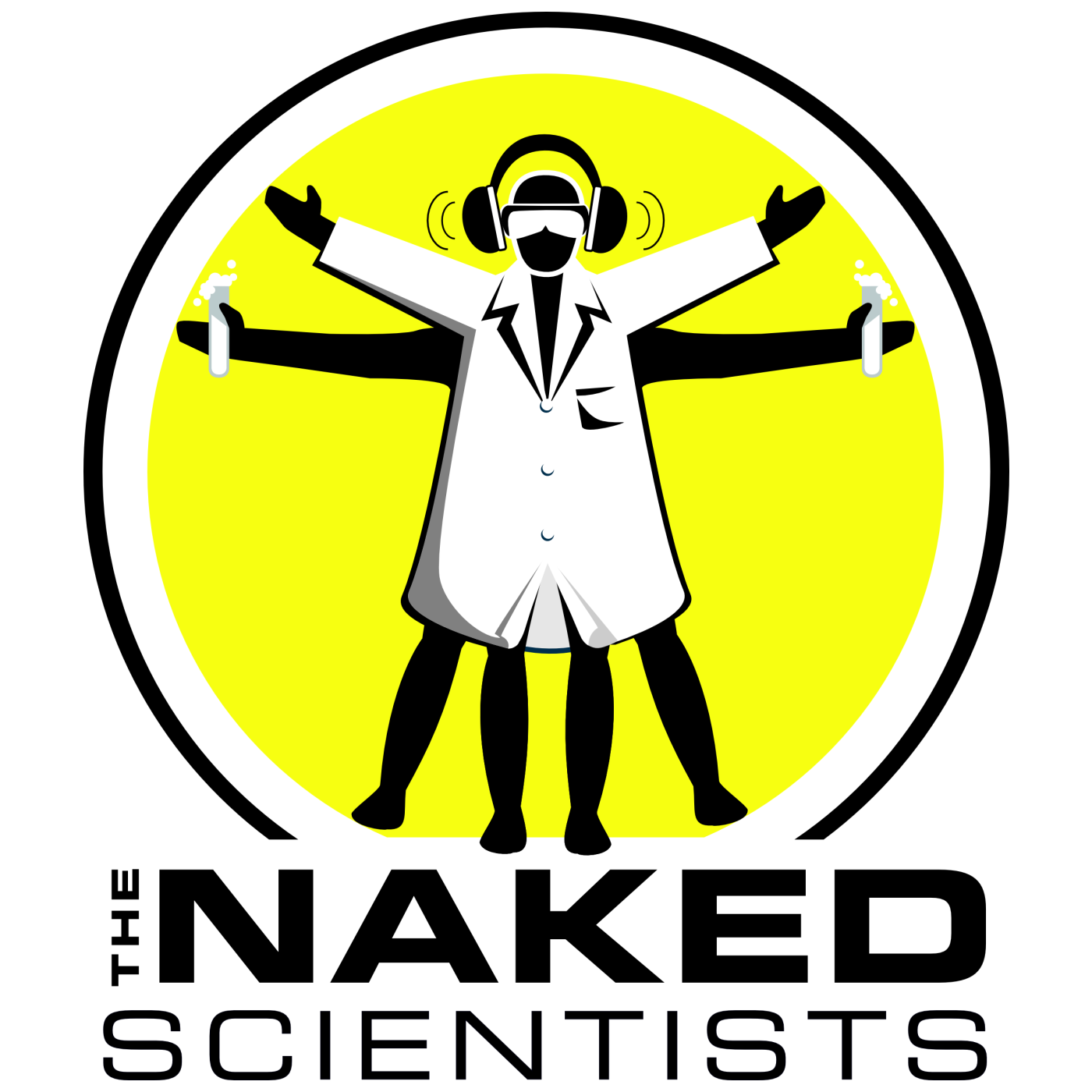
The Naked Scientists Podcast
The Naked Scientists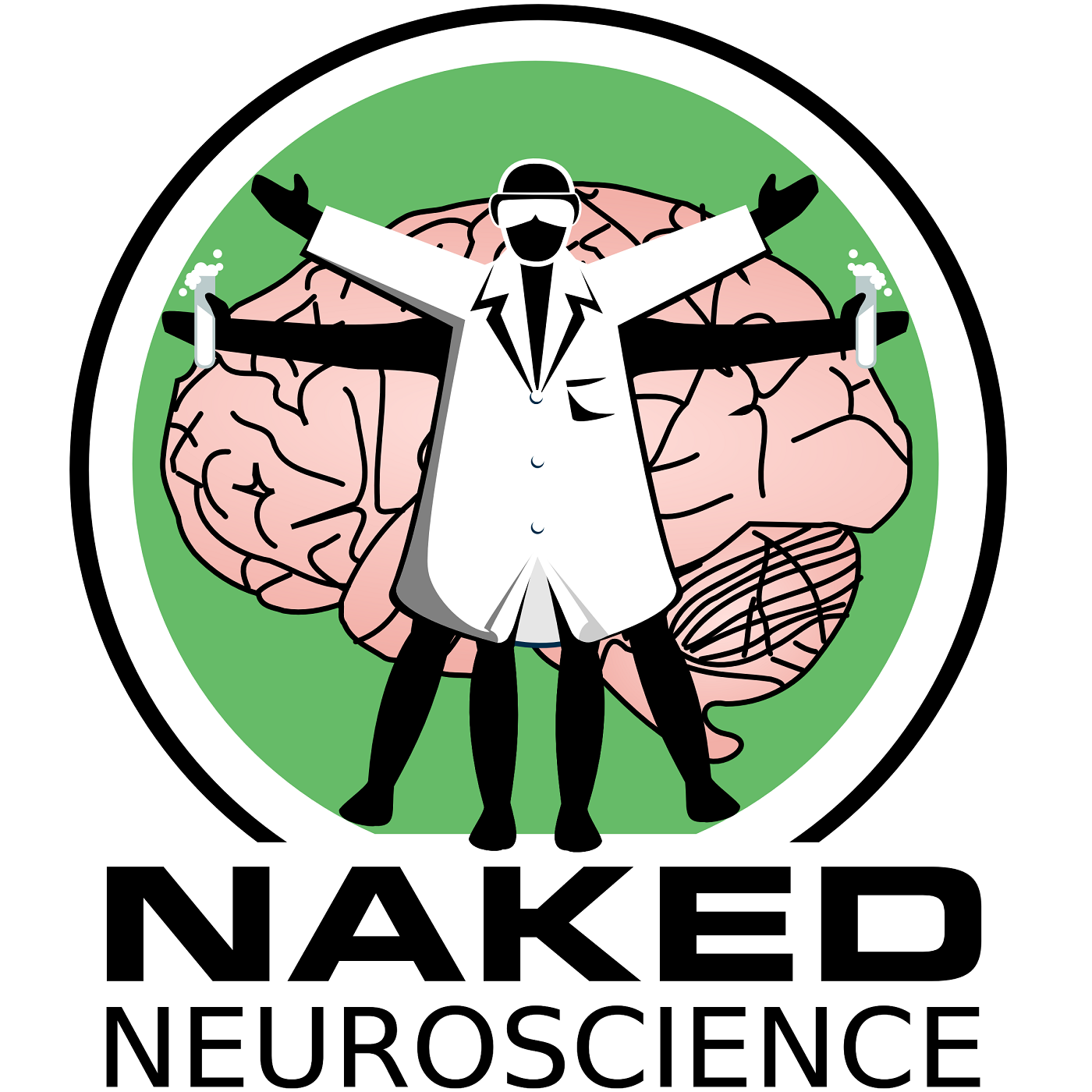
Naked Neuroscience, from the Naked Scientists
James Tytko
The TED AI Show
TED
Ologies with Alie Ward
Alie Ward
The Daily
The New York Times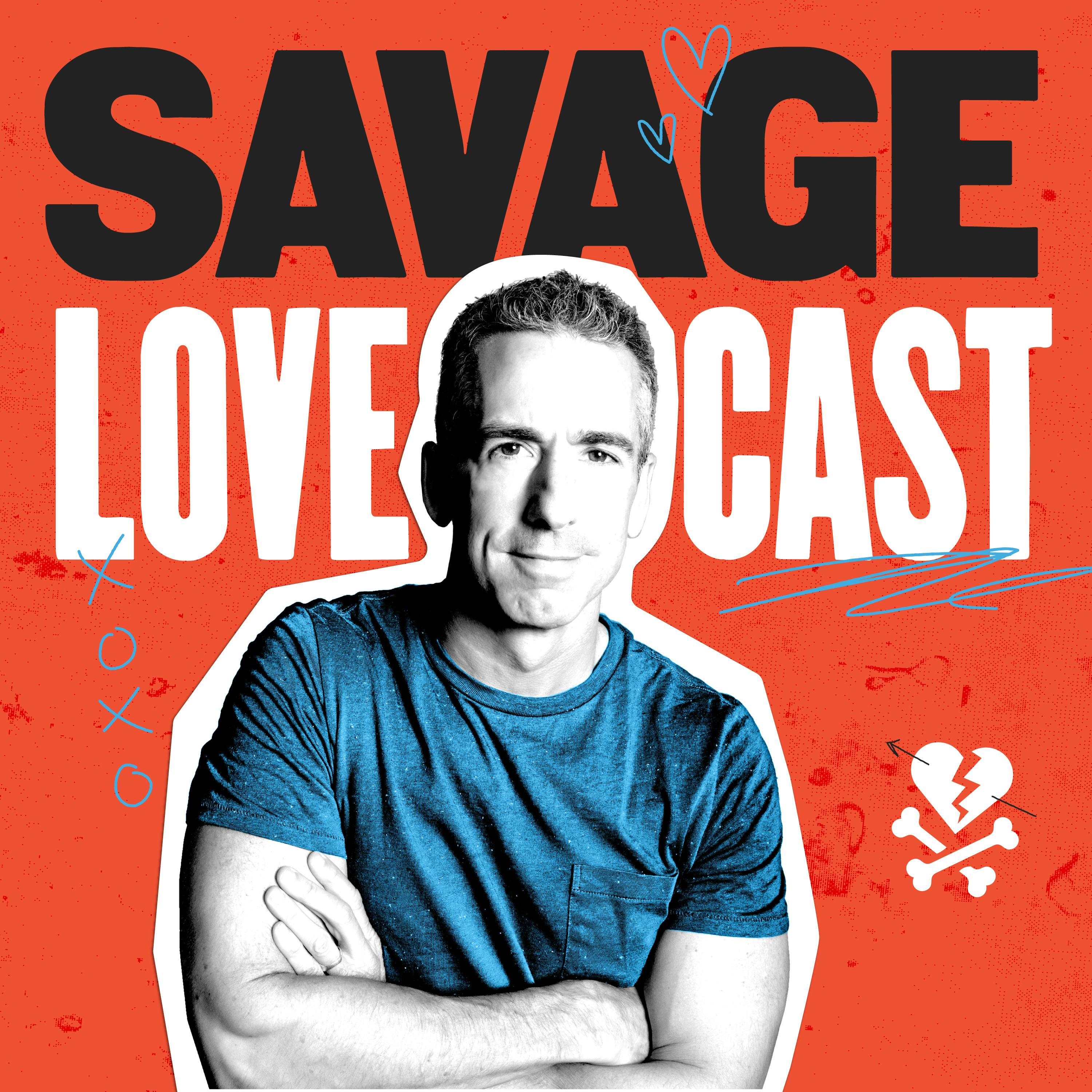
Savage Lovecast
Dan Savage
Huberman Lab
Scicomm Media
Freakonomics Radio
Freakonomics Radio + Stitcher
Ideas
CBCLadies, We Need To Talk
ABC listen
